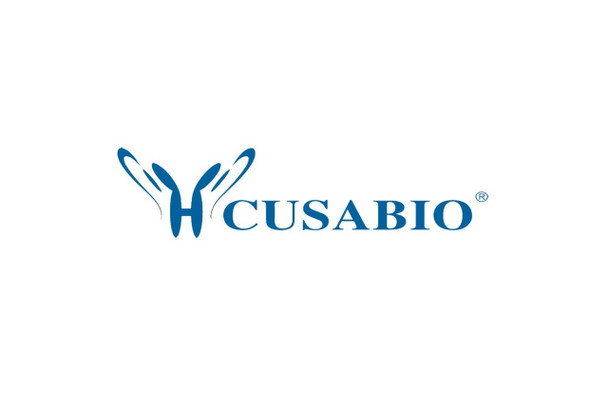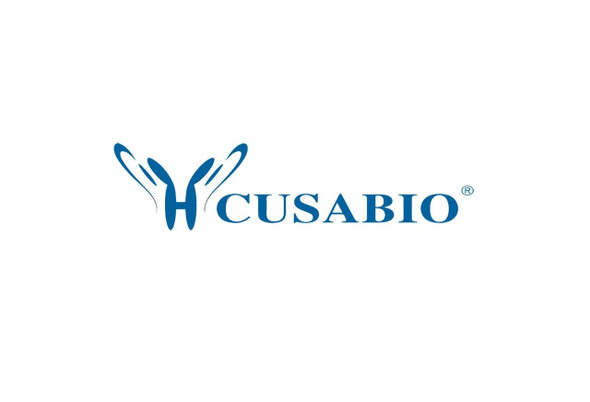Cusabio Human Recombinants
Recombinant Human Scavenger receptor class B member 1 (SCARB1), partial | CSB-EP845139HU
- SKU:
- CSB-EP845139HU
- Availability:
- 13 - 23 Working Days
Description
Recombinant Human Scavenger receptor class B member 1 (SCARB1), partial | CSB-EP845139HU | Cusabio
Alternative Name(s): CD36 and LIMPII analogous 1 ;CLA-1CD36 antigen-like 1Collagen type I receptor, thrombospondin receptor-like 1SR-BI; CD36
Gene Names: SCARB1
Research Areas: Cancer
Organism: Homo sapiens (Human)
AA Sequence: PSLIKQQVLKNVRIDPSSLSFNMWKEIPIPFYLSVYFFDVMNPSEILKGEKPQVRERGPYVYREFRHKSNITFNNNDTVSFLEYRTFQFQPSKSHGSESDYIVMPNILVLGAAVMMENKPMTLKLIMTLAFTTLGERAFMNRTVGEIMWGYKDPLVNLINKYFPGMFPFKDKFGLFAELNNSDSGLFTVFTGVQNISRIHLVDKWNGLSKVDFWHSDQCNMINGTSGQMWPPFMTPESSLEFYSPEACRSMKLMYKESGVFEGIPTYRFVAPKTLFANGSIYPPNEGFCPCLESGIQNVSTCRFSAPLFLSHPHFLNADPVLAEAVTGLHPNQEAHSLFLDIHPVTGIPMNCSVKLQLSLYMKSVAGIGQTGKIEPVVLPLLWFAESGAMEGETLHTFYTQLVLMPKVMHY
Source: E.coli
Tag Info: N-terminal 6xHis-SUMO-tagged
Expression Region: 33-443aa
Sequence Info: Extracellular Domain
MW: 62.7 kDa
Purity: Greater than 90% as determined by SDS-PAGE.
Relevance: Receptor for different ligands such as phospholipids, cholesterol ester, lipoproteins, phosphatidylserine and apoptotic cells. Probable receptor for HDL, located in particular region of the plasma mbrane, called caveolae. Facilitates the flux of free and esterified cholesterol between the cell surface and Extracellular domain donors and acceptors, such as HDL and to a lesser extent, apoB-containing lipoproteins and modified lipoproteins. Probably involved in the phagocytosis of apoptotic cells, via its phosphatidylserine binding activity. Receptor for hepatitis C virus glycoprotein E2. Binding between SCARB1 and E2 was found to be independent of the genotype of the viral isolate. Plays an important role in the uptake of HDL cholesteryl ester .
Reference: Hirano K., Yamashita S., Matsuzawa Y.The finished DNA sequence of human chromosome 12.Scherer S.E., Muzny D.M., Buhay C.J., Chen R., Cree A., Ding Y., Dugan-Rocha S., Gill R., Gunaratne P., Harris R.A., Hawes A.C., Hernandez J., Hodgson A.V., Hume J., Jackson A., Khan Z.M., Kovar-Smith C., Lewis L.R. , Lozado R.J., Metzker M.L., Milosavljevic A., Miner G.R., Montgomery K.T., Morgan M.B., Nazareth L.V., Scott G., Sodergren E., Song X.-Z., Steffen D., Lovering R.C., Wheeler D.A., Worley K.C., Yuan Y., Zhang Z., Adams C.Q., Ansari-Lari M.A., Ayele M., Brown M.J., Chen G., Chen Z., Clerc-Blankenburg K.P., Davis C., Delgado O., Dinh H.H., Draper H., Gonzalez-Garay M.L., Havlak P., Jackson L.R., Jacob L.S., Kelly S.H., Li L., Li Z., Liu J., Liu W., Lu J., Maheshwari M., Nguyen B.-V., Okwuonu G.O., Pasternak S., Perez L.M., Plopper F.J.H., Santibanez J., Shen H., Tabor P.E., Verduzco D., Waldron L., Wang Q., Williams G.A., Zhang J., Zhou J., Allen C.C., Amin A.G., Anyalebechi V., Bailey M., Barbaria J.A., Bimage K.E., Bryant N.P., Burch P.E., Burkett C.E., Burrell K.L., Calderon E., Cardenas V., Carter K., Casias K., Cavazos I., Cavazos S.R., Ceasar H., Chacko J., Chan S.N., Chavez D., Christopoulos C., Chu J., Cockrell R., Cox C.D., Dang M., Dathorne S.R., David R., Davis C.M., Davy-Carroll L., Deshazo D.R., Donlin J.E., D'Souza L., Eaves K.A., Egan A., Emery-Cohen A.J., Escotto M., Flagg N., Forbes L.D., Gabisi A.M., Garza M., Hamilton C., Henderson N., Hernandez O., Hines S., Hogues M.E., Huang M., Idlebird D.G., Johnson R., Jolivet A., Jones S., Kagan R., King L.M., Leal B., Lebow H., Lee S., LeVan J.M., Lewis L.C., London P., Lorensuhewa L.M., Loulseged H., Lovett D.A., Lucier A., Lucier R.L., Ma J., Madu R.C., Mapua P., Martindale A.D., Martinez E., Massey E., Mawhiney S., Meador M.G., Mendez S., Mercado C., Mercado I.C., Merritt C.E., Miner Z.L., Minja E., Mitchell T., Mohabbat F., Mohabbat K., Montgomery B., Moore N., Morris S., Munidasa M., Ngo R.N., Nguyen N.B., Nickerson E., Nwaokelemeh O.O., Nwokenkwo S., Obregon M., Oguh M., Oragunye N., Oviedo R.J., Parish B.J., Parker D.N., Parrish J., Parks K.L., Paul H.A., Payton B.A., Perez A., Perrin W., Pickens A., Primus E.L., Pu L.-L., Puazo M., Quiles M.M., Quiroz J.B., Rabata D., Reeves K., Ruiz S.J., Shao H., Sisson I., Sonaike T., Sorelle R.P., Sutton A.E., Svatek A.F., Svetz L.A., Tamerisa K.S., Taylor T.R., Teague B., Thomas N., Thorn R.D., Trejos Z.Y., Trevino B.K., Ukegbu O.N., Urban J.B., Vasquez L.I., Vera V.A., Villasana D.M., Wang L., Ward-Moore S., Warren J.T., Wei X., White F., Williamson A.L., Wleczyk R., Wooden H.S., Wooden S.H., Yen J., Yoon L., Yoon V., Zorrilla S.E., Nelson D., Kucherlapati R., Weinstock G., Gibbs R.A.Nature 440:346-351(2006)
Storage: The shelf life is related to many factors, storage state, buffer ingredients, storage temperature and the stability of the protein itself. Generally, the shelf life of liquid form is 6 months at -20?/-80?. The shelf life of lyophilized form is 12 months at -20?/-80?.
Notes: Repeated freezing and thawing is not recommended. Store working aliquots at 4? for up to one week.
Function: Receptor for different ligands such as phospholipids, cholesterol ester, lipoproteins, phosphatidylserine and apoptotic cells
Involvement in disease:
Subcellular Location: Cell membrane, Multi-pass membrane protein, Membrane, caveola, Multi-pass membrane protein
Protein Families: CD36 family
Tissue Specificity: Widely expressed.
Paythway: Cholesterolmetabolism
Form: Liquid or Lyophilized powder
Buffer: If the delivery form is liquid, the default storage buffer is Tris/PBS-based buffer, 5%-50% glycerol. If the delivery form is lyophilized powder, the buffer before lyophilization is Tris/PBS-based buffer, 6% Trehalose, pH 8.0.
Reconstitution: We recommend that this vial be briefly centrifuged prior to opening to bring the contents to the bottom. Please reconstitute protein in deionized sterile water to a concentration of 0.1-1.0 mg/mL.We recommend to add 5-50% of glycerol (final concentration) and aliquot for long-term storage at -20?/-80?. Our default final concentration of glycerol is 50%. Customers could use it as reference.
Uniprot ID: Q8WTV0
HGNC Database Link: HGNC
UniGene Database Link: UniGene
KEGG Database Link: KEGG
STRING Database Link: STRING
OMIM Database Link: OMIM









